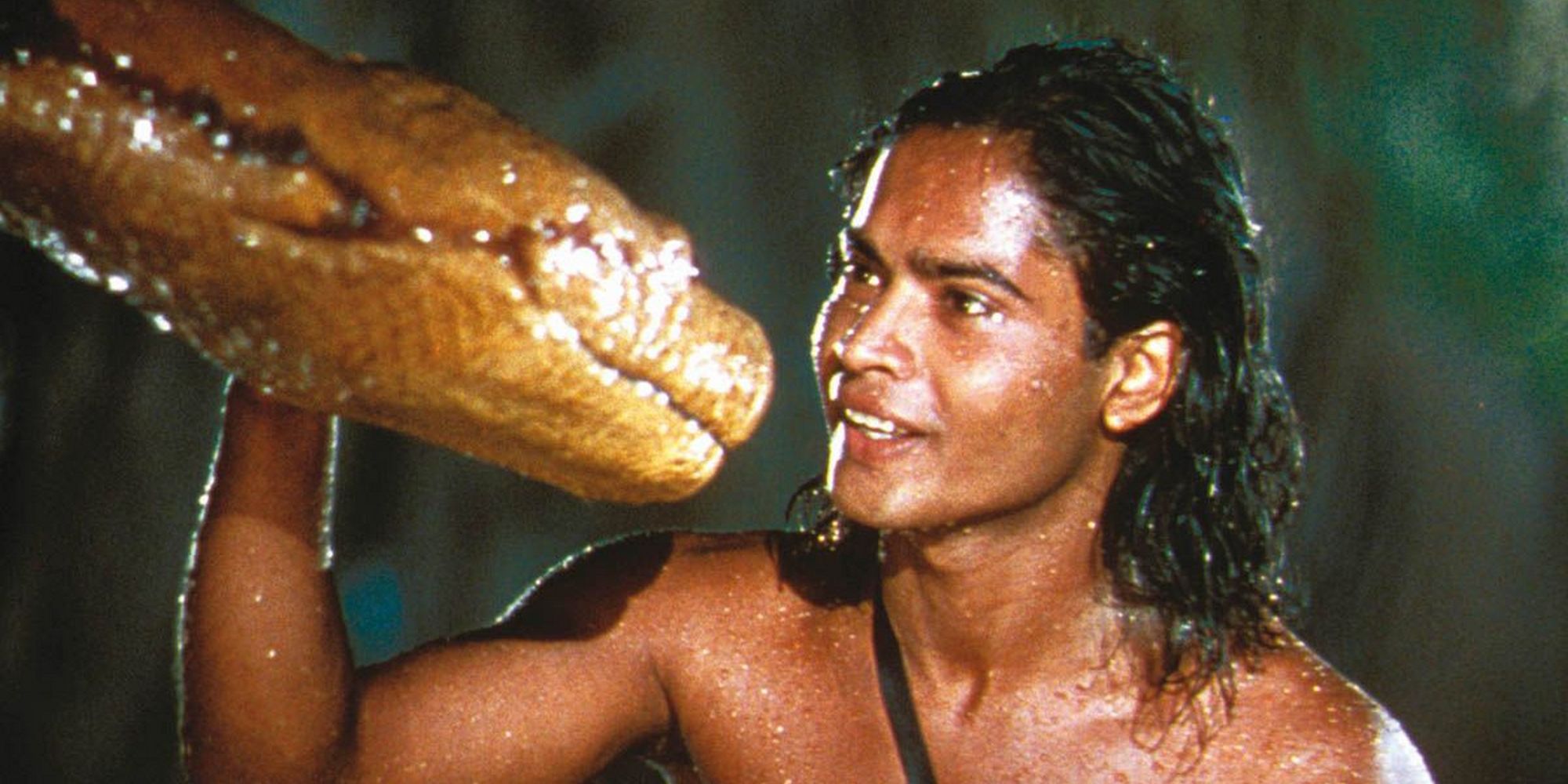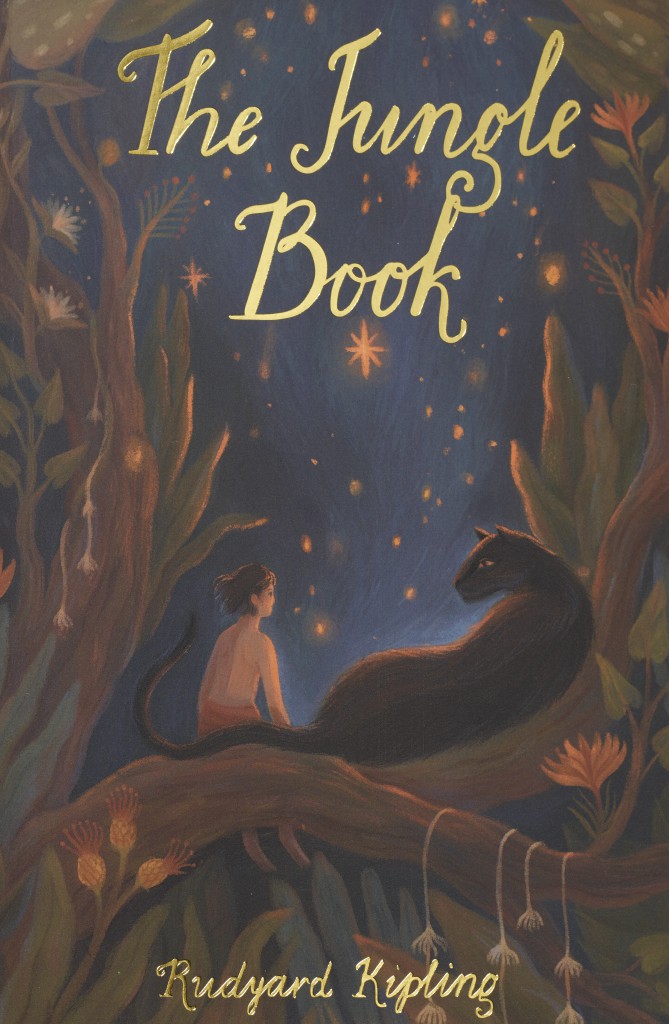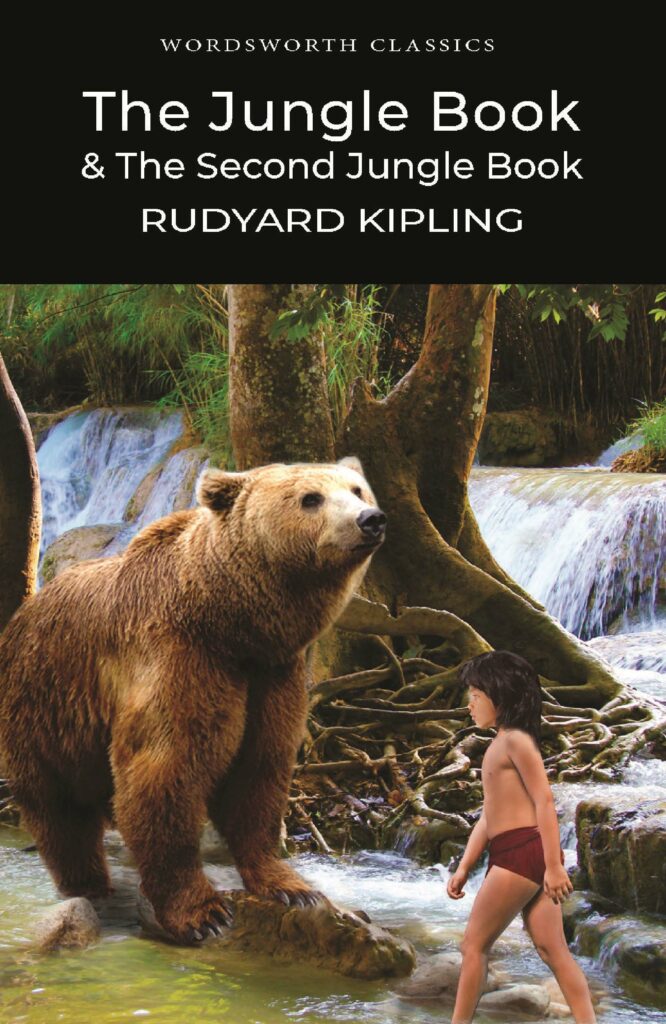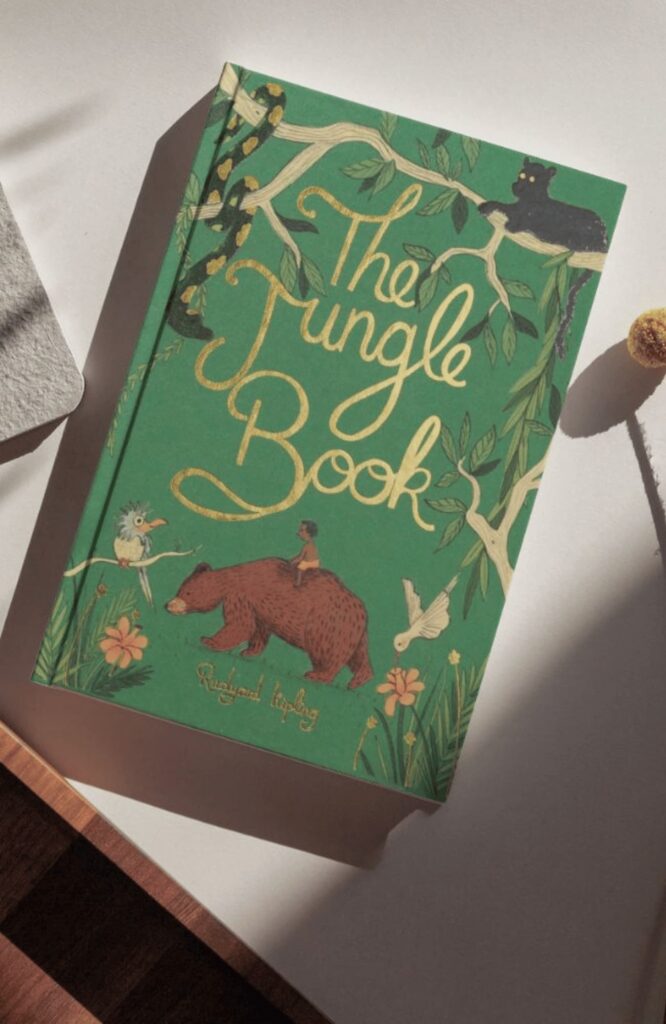
David Stuart Davies looks at The Jungle Book
David Stuart Davies looks at Kipling’s enduringly popular collection of stories in the Jungle Books.
The Jungle Books by Rudyard Kipling (1865-1936) are among those rare volumes which appeal to and indeed speak to both children and adults. The sequence of stories about the boy Mowgli accidentally thrust out of the human community into the jungle forms the core of these collections of short stories and poems. We follow his growth from jungle boyhood, and his relationship with the animals to his eventual return to human service as a forest ranger. Layered in a cunning and most sophisticated way, the adventures of Mowgli and the various animals in these stories entertain and thrill youngsters in a fairy-tale manner and yet, for the mature reader, they highlight concerns about the structure and control of society and human behaviour. The stories are not merely about animals and their characteristics, but about human archetypes in animal form.
Nevertheless, the animals remain true to their own nature with their individual characteristics: the sagacity of Baloo the bear who instructs Mowgli in the Laws of the Jungle, the wisdom of Bagheera, the black panther, the nobility of Akela the wolf, the independence of Kaa, the python, and the malevolence of Shere Khan, the tiger who killed the young boy’s parents.
These tales also illustrate the freedom to travel between different worlds, such as when Mowgli moves between the jungle and the village. Mowgli’s animal friends teach him respect for authority, obedience, and knowing one’s place in society, which can be epitomised in the opening lines of the poem ‘The Law of the Jungle’:
Now this is the Law of the Jungle – as old and
as true as the sky;
And the Wolf that shall keep it may prosper, but
the Wolf that shall break it must die.
Therefore, It appears that the Law of the Jungle requires unbending allegiance and absolute loyalty to the Pack and its leader. The last lines of the poem spell out its simple message, which was intended to have the universal application:
Now these are the Laws of the Jungle, and
many and mighty are they;
But the head and hoof of the Law and the
haunch and hump of it is – Obey!
The books promote and celebrate a range of Victorian values that Kipling held highly, particularly the ones that define a well-ordered and civilised society, which are epitomised in the Law of the Jungle. It has been suggested by several critics that the strict observation of these laws, which bring order and regulation to society, were a metaphor for the British rule in India which the young Kipling experienced firsthand in the very early years of his life.
Mowgli’s abandonment by human society and his fostering by the animals echo Kipling’s own childhood. At the age of six, he was sent away by his parents from India, where he was born in 1865, to be educated in England and so he not only lost close contact with them but also the land that he loved. When he came to write the first Jungle Book in 1893/4, Kipling was inspired by his memories of India and his own dysfunctional childhood. Certainly one can see from the Mowgli saga as it unfolds that the author is writing a version of his own biography. The trauma of abandonment that the young Kipling experienced when shipped to England is reflected in these tales. ‘Mowgli’s Brothers’ begins with the young Indian boy losing his parents and concludes with him being cast out by the Wolf Pack.
Similarly, at the end of ‘Tiger, Tiger’ he is rejected by the village. If this situation is a hyperbolic motif for Kipling’s own experience, the author also presents a wish-fulfilment scenario that he certainly did not experience. He provides Mowgli with an abundance of loving foster parents in the shape of the animals of the jungle. All these creatures vie with each other to care for and educate the youngster.
While it is both satisfying and intriguing to delve below the surface layer of these stories to discover the inspiration and intellectual purposes associated with them, in the end, the enduring success of The Jungle Books is in their power to thrill and entertain. The stories engage our interest because we care about the characters and are caught up in the imaginative web of language and drama that Kipling weaves so well.
When The Jungle Book was first published in 1894, it was an instant success and was regarded by some critics as a kind of mature and sophisticated version of Aesop’s Fables. The sequel was published in 1895.
The Jungle Book has been the subject of many film versions. The Elephant Boy (1937) was based on ‘Toomai of the Elephants’. It was directed by Alexander Korda, as was The Jungle Book (1942); both films starred the Indian actor Sabu. Walt Disney produced the perennially popular animated version in 1967 which had a collection of tuneful songs by the Sherman Brothers. These included the Oscar-nominated, ‘The Bare Necessities’ and ‘I want to be like you’ as well as ‘I’m the King of the Swingers’, which was sung by a large ape, King Louie, a new character added to the scenario. This cartoon feature took great liberties with the plot and characters of the original book but had the advantage of bringing hordes of new readers to Kipling’s work. Disney returned to Mowgli and crew in 2016 with a live-action version of the book – but it did include several songs from the animated version. 2018 saw another film based on the central characters in Mowgli: Legend of the Jungle
The universal appeal of these two books is demonstrated by the fact that animated features based on the stories have been produced in such diverse locations as Russia, Japan and India. As in all great literature, the power of the characters and situations breaks down the barriers of language.
Books associated with this article

The Jungle Book & The Second Jungle Book
Rudyard Kipling

The Jungle Book & The Second Jungle Book
Rudyard Kipling

The Jungle Book (Collector’s Edition)
Rudyard Kipling
